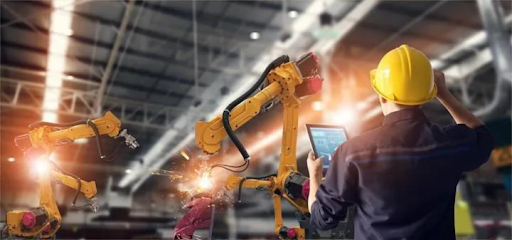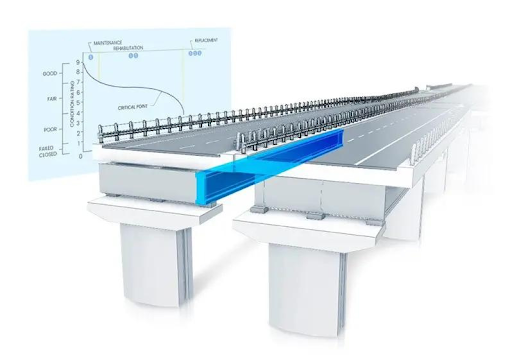As we all know, change is the only constant element in life. Artificial Intelligence (AI) advancements are revolutionising all facets of our existence, particularly the engineering field. This can be seen in AI’s recent trend of using big data and synthesis of information from patterns, to make autonomous decisions, making what was once thought impossible possible. This article touches on the riveting area of Engineering Applications of Artificial Intelligence that is shaping things in design, optimisation, predictive maintenance, robotics, structural health monitoring, genomics, and much more. Study the transformational power of AI in engineering and the future of technology and infrastructure as they are reshaping.
AI in Design and Optimisation

In recent times, the ability of engineers to tap into a large area of possibilities in design aimed at enhancing performance and eventually making general optimisation easier has been made easier through AI modules in algorithms, machine learning, and computational modelling. AI is changing and, at the same time, enhancing the way of designing and optimising in a number of ways, namely:
Generative Design
Artificial Intelligence (AI) in generative design produces solutions based on certain unique constraints and objectives, using algorithms to plot and present several design choices. Iterative (repetitive) assessment, design, and idea improvement can reveal fresh approaches that were missed using more conventional methods.
Simulation and Analysis
AI-enabled simulation and analysis tools also serve as predictive measures, which give engineers a sneak peek at how a complex system is most likely to act and the performance that a designed system will likely produce under different operating conditions. Furthermore, machine learning algorithms are also able to analyse the outcomes of simulation by marking patterns and, at the same time, optimising design parameters with the aim of realising the desired outcomes.
Product Customisation
Another renowned area of AI operation is product customisation, where the product designs literally change on the spot, in real time, pointing to the wants and demands of a specific individual. AI algorithms can generate personalised design variations through user data and related feedback that fit within the specific needs, preferences, and constraints of the users in question.
AI–Driven Optimisation
The drive of AI is towards optimum solutions within vast and complex design spaces. That is, they keep checking and revisiting, on an iterative basis, the fine-tuning of design parameters towards objectives of performance maximisation, or any other specified objectives.
Design for Manufacturability
AI tools help analyse the constraints of the manufacturing process and the requirements soon enough before the design is put in place to ensure its manufacturability and cost-effectiveness. It helps in doing design optimisation both for the manufacturing process and the properties of the material. This, in turn, reduces cost and minimises waste, while enhancing product quality.
Essentially, AI in design and optimisation gives engineers the required tools and methodologies imperative for addressing complex design challenges, innovation, finding new solutions, and coming up with approaches to optimise engineering systems for better performance, efficiency, and sustainability. As AI technologies keep getting better, it can well be expected that soon, the new AI emerging will bring forth more innovation and efficiency in all engineering disciplines.
AI in Predictive Maintenance

In engineering, predictive maintenance is a proactive maintenance strategy that uses data analytics and machine learning techniques to predict when equipment failure is likely to occur. AI in this regard empowers engineers to create innovative solutions and enhance performance across various domains. Predictive maintenance uses AI-driven analytics to detect equipment anomalies and prevent downtime. By forecasting equipment failures, AI enables efficient maintenance scheduling and maximises asset uptime.
AI in Robotics and Automation

Industries globally are increasingly adopting robotic automation systems to streamline processes and improve efficiency. AI in robotics and automation aids these processes by bringing about bots equipped with autonomous decision-making, learning, and adaptation. By leveraging AI algorithms, robots can perceive their environment, make intelligent decisions, and perform complex tasks with greater efficiency and accuracy. This integration has revolutionised various industries, including manufacturing, logistics, healthcare, and agriculture, by enabling automation of repetitive tasks, enhancing productivity, and improving safety. AI-powered robots can perform tasks such as assembly, picking and packing, surgical procedures, and crop harvesting with precision and speed, leading to increased operational efficiency and cost savings.
AI In Autonomous Vehicles and Drones

Artificial Intelligence (AI)-powered autonomous vehicles and drones are also transforming aerial operations and transportation by providing accurate object detection, efficient navigation, traffic management, and collision avoidance. These technologies optimise routes, improve situational awareness, and guarantee safety by utilising complex algorithms and sensor data processing.
Asides enhancing traffic efficiency and reducing gridlock, self-driving cars work in tandem with centralised systems to modify routes on the fly.
Similarly, AI-enabled drones provide timely monitoring in farms, for instance, reconnaissance, and surveillance, yielding valuable data for security, crop management, and disaster relief. These drones also help in logistics by providing safe package transportation and optimum routes for deliveries. All things considered, AI-powered drones and autonomous cars promise revolutionary advantages for a variety of businesses, bringing in a new era of effectiveness, security, and ease.
AI in Structural Health Monitoring

In engineering, the importance of carrying out structural integrity tests on structures cannot be emphasised enough. Through improved structural defect and damage detection, assessment, and prediction, AI in structural health monitoring transforms infrastructure management.
AI systems study data from several sources, including sensors, cameras, and Internet of Things (IoT) devices, to monitor the state of bridges, buildings, and other vital infrastructure through sophisticated machine learning algorithms and sensor technologies. This lowers the likelihood of catastrophic failures and improves public safety. AI also helps with structural behaviour prediction and modelling, which enables engineers to plan ahead for maintenance requirements and allocate resources as efficiently as possible.
By providing infrastructure managers with meaningful insights, AI in structural health monitoring helps them make well-informed decisions and ensures the durability and resilience of civil infrastructure assets.
AI-based solutions for environmental monitoring and management

Concerning the environment, AI hovers like a silent guardian, with its sensors and satellite imagery probing deep into the natural world, aiming to ensure a delicate balance. Sensors, integrated with AI, keep a constant watch on land, air, and sea, ready to set off alarms at the first indication of a problem.
But AI has been much more than a passive onlooker; it is an active, positive force for change. Machine learning pumps computation full of AI to sort through vast lakes of data, pulling out secret patterns and predicting futurity with a striking accuracy rate. This would in turn arm up the conservationists with the necessary knowledge on ways through which vulnerable ecosystems can be put under a shield from the impacts of human activity—how human activity can further be offset and how the future can be put in place for coming generations.
They also provide the application for vast centres in conservation of wildlife, monitoring environmental changes, and management in cases of disaster. Ranging from the identification of species to programs that can save them from annihilation, and anti-poaching initiatives, correcting genetic deficiencies that threaten the existence of a species can be done through different innovations of AI. Such innovations give power to stakeholders in terms of informed decision-making and sustainability.
Challenges and Future Directions
As the integration of AI into engineering applications continues to evolve, several challenges and future directions emerge, shaping the trajectory of this field.
The major challenge is the ethical and societal implications of AI in engineering. Concerns about privacy, bias, and job displacement raise questions about responsible AI implementation. Future directions in this regard involve developing ethical frameworks, ensuring transparency, and promoting inclusive decision-making processes.
The complexity and interpretability of AI models present another difficulty. Comprehending and explaining AI-driven decisions is essential in engineering applications where safety and dependability are critical. In the future, engineers should concentrate on creating AI models that are understandable, creating reliable validation processes, and improving AI-human cooperation.
Data quality and availability pose additional challenges, particularly in domains with limited or unstructured data. Future directions may involve developing innovative data collection techniques, leveraging domain knowledge, and exploring transfer learning approaches to address data scarcity.
Interdisciplinary collaboration and talent acquisition are other key factors in advancing AI in engineering. Encouraging collaboration amongst engineers, data scientists, and domain specialists, in addition to advocating AI education and training initiatives, will be an effective measure in the future.
Summarily, the potential of AI to transform engineering applications can be fully realised by resolving ethical issues, improving model interpretability, overcoming data limits, optimising computational resources, and encouraging interdisciplinary collaboration.
Summary
| Engineering Applications of Artificial Intelligence (AI) | Data |
| Predictive Maintenance | Utilises AI algorithms to predict equipment failure before it occursMinimises downtime and reduces maintenance costsEnhances equipment reliability and operational efficiency |
| Design and Optimisation | AI-driven tools ensures rapid prototyping and design optimisationImproves product performance and efficiencyStreamlines the design process and reduces development time |
| Robotics and Automation | AI-powered robots are utilised for manufacturing, logistics, and service industriesEnhances productivity and precisionEnables autonomous operation and adaptive behaviour |
| AI in Autonomous Vehicles and Drones | Utilises AI algorithms for navigation, obstacle detection, and decision-makingPromotes safer and more efficient transportationSupports applications in delivery, surveillance, and exploration |
| AI in Structural Health Monitoring | Utilises AI for real-time monitoring of structural integrityDetects defects, cracks, and potential failuresEnhances safety and prolongs the lifespan of infrastructure |
| AI-based Solutions for Environmental Monitoring and Management, | Utilises AI for analysing environmental data, predicting trends, and identifying risksFacilitates early warning systems and resource allocationSupports sustainable management of natural resources |

